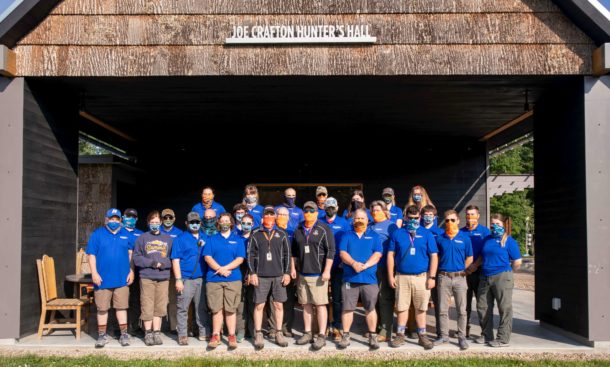While the Summit’s camping footprint won’t be as big as that of the jamboree’s old location at Fort A.P. Hill (1,270 acres compared to 5,000 acres), you should still bring your walking shoes.
Not to worry, though, the Summit is already taking your aching feet into consideration.
This summer, intern crews from Trinity Works started to clear what is to become approximately 25 miles of backcountry trail. The trails will be used as routes for foot traffic around the Summit and, of course, recreational hiking.


“Due to the topography of the site, we are pleased to have found accessible routes with great views and special places across and around the Summit,” said Dave Brown, professional surveyor for TERRADON Corporation.
Crews will also begin laying out what they refer to as “crossing designs” during the fall and winter months. That is to say, they’ll be building bridges and steps so you can get from point A to point B without having to swing from tree vines or swim across chilly creeks.
Scout Boots Are Made For Walking
Why is the Summit so concerned with the quality and availability of your hiking trails, you ask?
Because we plan to make walking the primary (but not the only) method of transportation on site.
Whether you’re going to dinner, heading to your subcamp or just wandering around, there’s a good chance you’ll be walking.
And this is a good thing. [pullquote]“We are pleased to have found accessible routes with great views and special places across and around the Summit.” — Dave Brown, professional surveyor from TERRADON Corporation[/pullquote]
You don’t need to major in transportation studies to know more walking means less driving. You certainly don’t need that degree in environmental studies to know that less driving means less pollution. To put it simply, the Summit is going green, and that means using those trotters (that’s British slang for feet).
Besides being environmentally friendly, the trail system will also act as crowd control and allow you to enjoy the scenery at your own leisure.
“A lot of thought has been put into the planning of the roads and trails to give you that feeling of remoteness and uniqueness,” said Tom Wagner, action sports development director of Trinity Works. “You’re going to be walking everywhere you go, and you have these trails spreading everybody out.”
Trails All Around!
But for those of you who prefer wheels to heels, you’ll be covered, too.
SummitCorps was a 4-week trail-building project that produced 12.8 miles of mountain bike trails in the New River Gorge, adjacent to Summit property. Order of the Arrow members poured into West Virginia throughout the month of July, making the project one of the largest of its kind in National Park Service history.
In any case, the Summit is making sure there will be plenty of scenic and navigable trails ready for you when you get here in 2013 so you can enjoy the green, while being green.
What is the farthest you have hiked at one time? Tell us about your favorite hiking experience in the comment thread!



